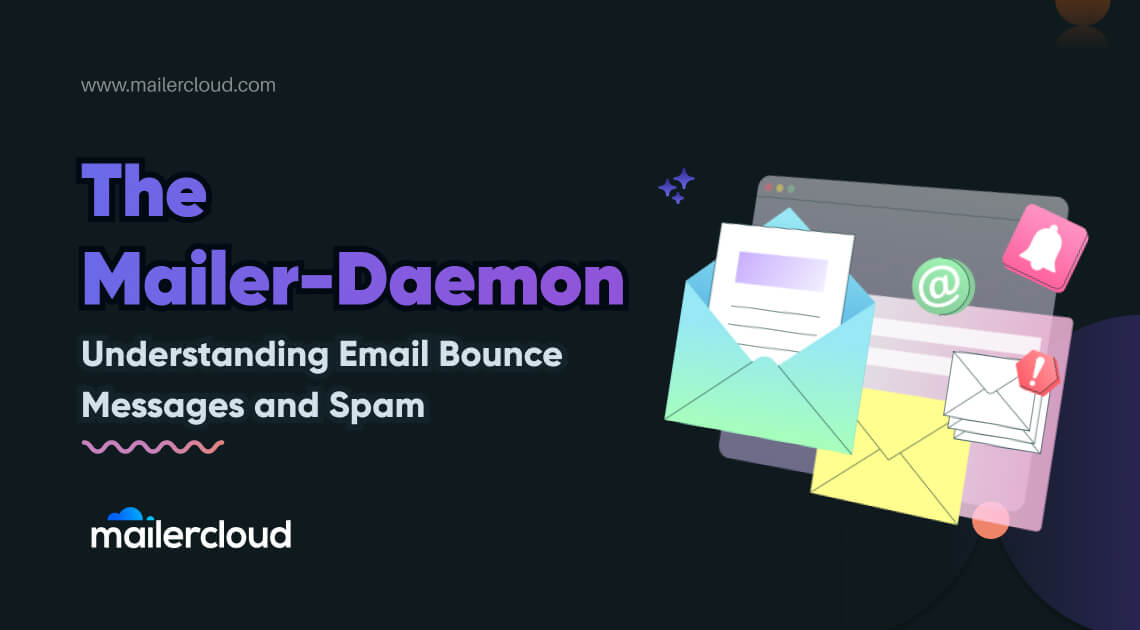Have you ever received a strange email with the sender listed as “mailer-daemon@” followed by a domain name? If so, you’re not alone. These automated messages, called bounce emails, are sent when a message you tried to send couldn’t be delivered.
In this updated 2025 guide, we’ll explain:
- What mailer-daemon messages are
- Why they happen
- What bounce codes mean
- How to protect yourself from spoofing or spam
- What to do if you didn’t send the original message
Let’s decode mailer-daemon emails and show you how to protect your email reputation—whether you’re an individual or a business.
Table of Contents
What Is a Mailer-Daemon?
A mailer-daemon is a server-side program responsible for email delivery. When a message can’t be delivered to the recipient, the mailer-daemon returns an automated bounce message to the sender.
Example: You send an email to [email protected], but that address doesn’t exist. The mailer-daemon responds with a delivery failure notice explaining the issue.
These messages aren’t spam themselves—but they could signal bigger issues like:
- An incorrect email address
- A full inboxF
- Server issues
- Or worse, someone is spoofing your email address
In some cases—especially during email blasts—the daemon may generate error messages called bounce messages when it encounters issues during the delivery process.
Why Did You Receive a Mailer-Daemon Email?
Here are the most common reasons you might see one in your inbox:
Spoofing: A spammer used your email address as the “From” address, and the failed attempts are returning to you.
Invalid recipient address: A typo in the email address or the mailbox doesn’t exist.
Mailbox full: The recipient has exceeded their storage limit.
Spam detection: Your email was flagged by the recipient’s spam filter.
Temporary server failure: The recipient’s server may be down or overloaded.
Sometimes, delivery failures occur due to misconfigured sender addresses—for example, using a noreply email address that cannot process replies or bounce notifications properly.
Another common cause is email spoofing during spam blasts. In such cases, your address may be forged without your knowledge. If recipient servers flag these messages as spam, the delivery subsystem returns them to you as undeliverable. Always double-check the failed delivery message to understand the error and take corrective action. Following basic email etiquette helps preserve your sender reputation and avoid being marked as spam.
As email platforms evolve to combat email spoofing and spam, new technologies like RCS messaging are emerging to authenticate messages and minimize fraudulent activity.
If you notice a mailer-daemon message for an email you didn’t send, it may indicate a password breach. Update your password immediately and secure your account. Delete any suspicious messages from your desktop inbox and allow time for legitimate emails to complete the sending process. To enhance your account security and prevent future breaches, consider the benefits of password management software, such as creating strong, unique passwords, securely storing your credentials, and reducing the risk of unauthorized access across multiple platforms.
Additionally, learning common email acronyms and terminology can help you better understand bounce messages and respond quickly.
Finally, be careful when sending large files like videos via email. Use proper formats and optimized methods to reduce errors and ensure smooth delivery.
Understanding Bounce Types: Hard vs. Soft Bounces
- Hard Bounce: Permanent delivery failure. Examples include fake or non-existent email addresses.
- Soft Bounce: Temporary issue, such as a full inbox or server timeout.
Mailer-daemon messages will usually include an error code to indicate the cause.
Common Email Error Codes Explained
Here are some frequently seen bounce-back codes and what they mean:
| Error Code | Meaning |
|---|---|
| 550 | Mailbox not found or invalid address |
| 451 | Temporary local problem (try again later) |
| 554 | Message flagged as spam by receiving server |
| 421 | Recipient server temporarily unavailable |
| 552 | Recipient mailbox is full |
These codes are crucial for diagnosing delivery failures.
Learn how to send bulk emails successfully with the right tools.
How to Prevent Mailer-Daemon Errors
If you’re a sender, follow these best practices:
- Double-check recipient email addresses
- Use a verified sender domain (SPF, DKIM, DMARC records in place)
- Avoid sending from no-reply or unmonitored email addresses
- Clean your email list regularly
- Send emails from a reputable platform like Mailercloud to improve deliverability
At Mailercloud, we’ve seen clients reduce bounce rates by:
- Enabling domain authentication (SPF/DKIM)
- Setting up dedicated sending domains
- Using suppression lists to avoid sending to invalid emails
What If You Didn’t Send the Email?
Sometimes, mailer-daemon messages appear for emails you never sent. This might be a sign of:
- Email spoofing: Spammers used your email in the “From” field.
- Account compromise: Your credentials were stolen and used to send spam.
Steps to take:
- Change your password immediately
- Enable two-factor authentication (2FA)
- Scan your system for malware or keyloggers
- Check your sent folder for suspicious messages
- Set up SPF, DKIM, and DMARC to prevent spoofing
For businesses sending high-volume emails, this risk underscores the importance of using a secure and trusted platform. 👉 Enterprise email marketing platforms are designed with enhanced security and deliverability in mind, helping protect your domain reputation and customer trust.
Check out the 10 best Mailchimp alternatives for 2025.
How to Spot Mailer-Daemon Spam or Phishing
Not all bounce messages are legitimate. Some are fake and aim to trick you.
Watch out for:
- Email attachments in bounce messages (don’t open them!)
- Messages asking for personal info
- Return addresses that look suspicious (e.g.
[email protected])
Pro Tips for Business Users
If you’re sending transactional or marketing emails, deliverability is everything. You can’t afford to have your domain reputation damaged. That’s why choosing the right email marketing software is essential—it ensures reliable delivery, compliance, and better engagement with your audience.
- Use a platform like Mailercloud for bulk sending
- Set up a dedicated IP for large campaigns
- Monitor bounce logs regularly
- Segment inactive or invalid contacts from your list
- Send email formats optimized for size and load time
Bonus: Why Bounce Management Matters in 2025
With privacy laws like GDPR, CAN-SPAM, and India’s DPDP Act, email hygiene has never been more important.
Modern ESPs like Mailercloud let you:
- View real-time bounce reports
- Automatically suppress hard bounces
- Maintain compliance with global data rules
Failing to manage bounce emails can:
- Damage your sender score
- Get you blacklisted
- Lead to legal penalties (for spam violations)
Final Thoughts
Receiving an email from mailer-daemon isn’t always a threat, but it’s always worth understanding. These messages can help you:
- Identify issues with your sending list
- Protect your email reputation
- Improve deliverability
- Stay alert against phishing and spoofing
Take action fast when you get one. Check the bounce reason, update your practices, and use a secure platform like Mailercloud to help keep your communications clean and effective. Staying informed with the latest email marketing news in 2025 can also help you adapt your strategy proactively.
Lina is a content writer with a passion for reading, writing, and cooking. She aims to explore the world of words and flavors. With a deep love for literature and a knack for creating mouthwatering recipes, she strive to engage and inspire others through her work.

































